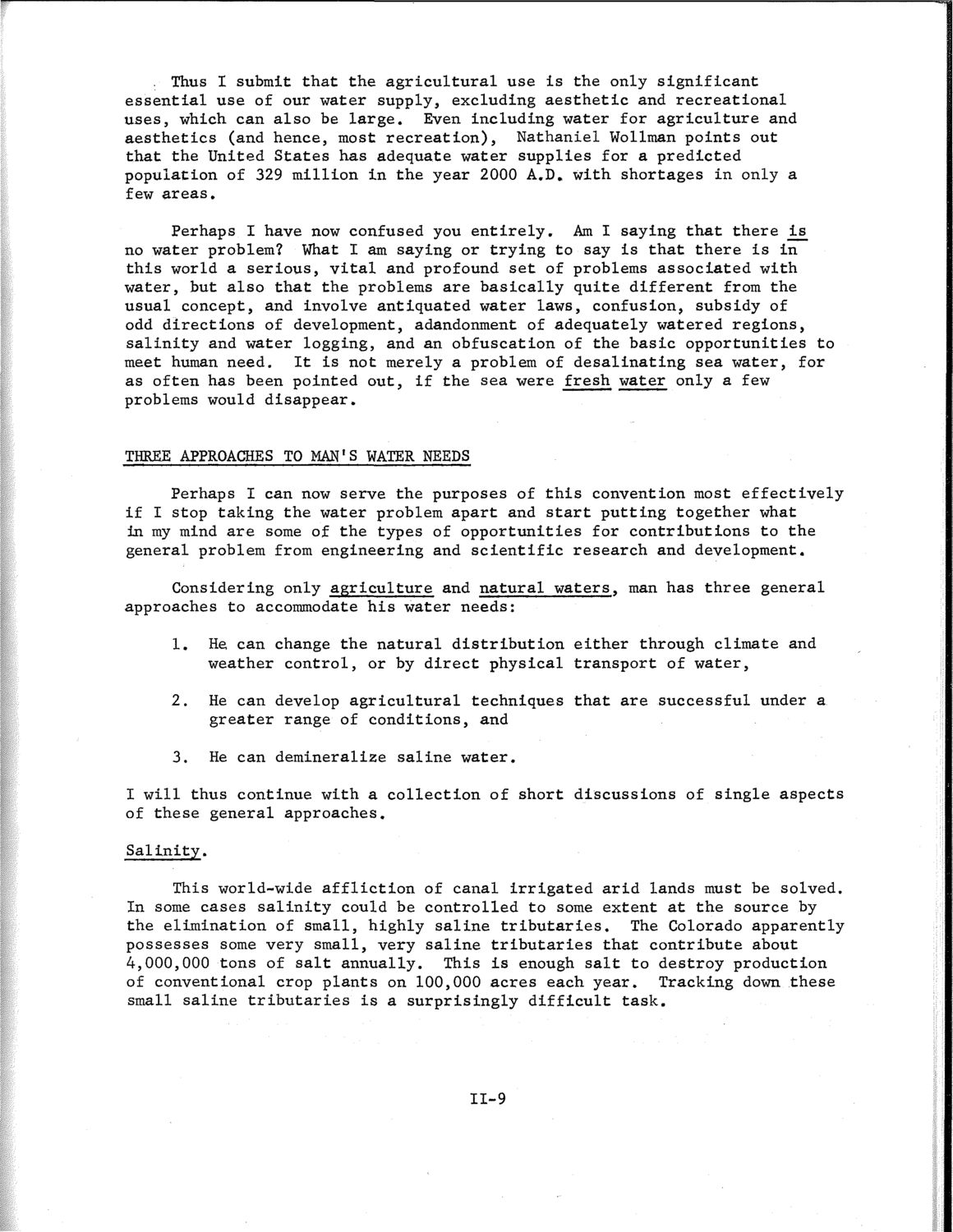| |
| |
Caption: SWE - Proceedings of the First International Conference of Women Engineers and Scientists
This is a reduced-resolution page image for fast online browsing.

EXTRACTED TEXT FROM PAGE:
Thus I submit that the agricultural use is the only significant essential use of our water supply, excluding aesthetic and recreational uses, which can also be large. Even including water for agriculture and aesthetics (and hence, most recreation), Nathaniel Wollman points out that the United States has adequate water supplies for a predicted population of 329 million in the year 2000 A.D. with shortages in only a few areas. Perhaps I have now confused you entirely. Am I saying that there ±s_ no water problem? What I am saying or trying to say is that there is in this world a serious, vital and profound set of problems associated with water, but also that the problems are basically quite different from the usual concept, and involve antiquated water laws, confusion, subsidy of odd directions of development, adandonment of adequately watered regions, salinity and water logging, and an obfuscation of the basic opportunities to meet human need. It is not merely a problem of desalinating sea water, for as often has been pointed out, if the sea were fresh water only a few problems would disappear. THREE APPROACHES TO MAN'S WATER NEEDS Perhaps I can now serve the purposes of this convention most effectively if I stop taking the water problem apart and start putting together what in my mind are some of the types of opportunities for contributions to the general problem from engineering and scientific research and development. Considering only agriculture and natural waters, man has three general approaches to accommodate his water needs: 1. He can change the natural distribution either through climate and weather control, or by direct physical transport of water, 2. He can develop agricultural techniques that are successful under a greater range of conditions, and He can demineralize saline water. 3. I will thus continue with a collection of short discussions of single aspects of these general approaches. Salinity. This world-wide affliction of canal irrigated arid lands must be solved. In some cases salinity could be controlled to some extent at the source by the elimination of small, highly saline tributaries. The Colorado apparently possesses some very small, very saline tributaries that contribute about 4,000,000 tons of salt annually. This is enough salt to destroy production of conventional crop plants on 100,000 acres each year. Tracking down these small saline tributaries is a surprisingly difficult task. II-9
| |